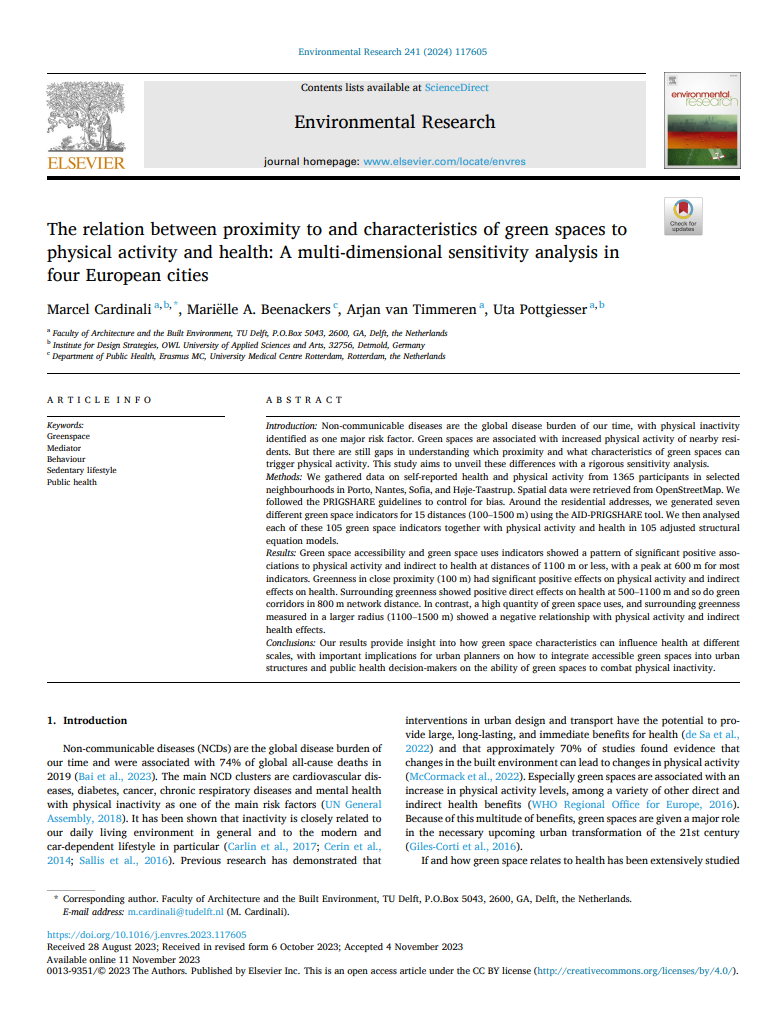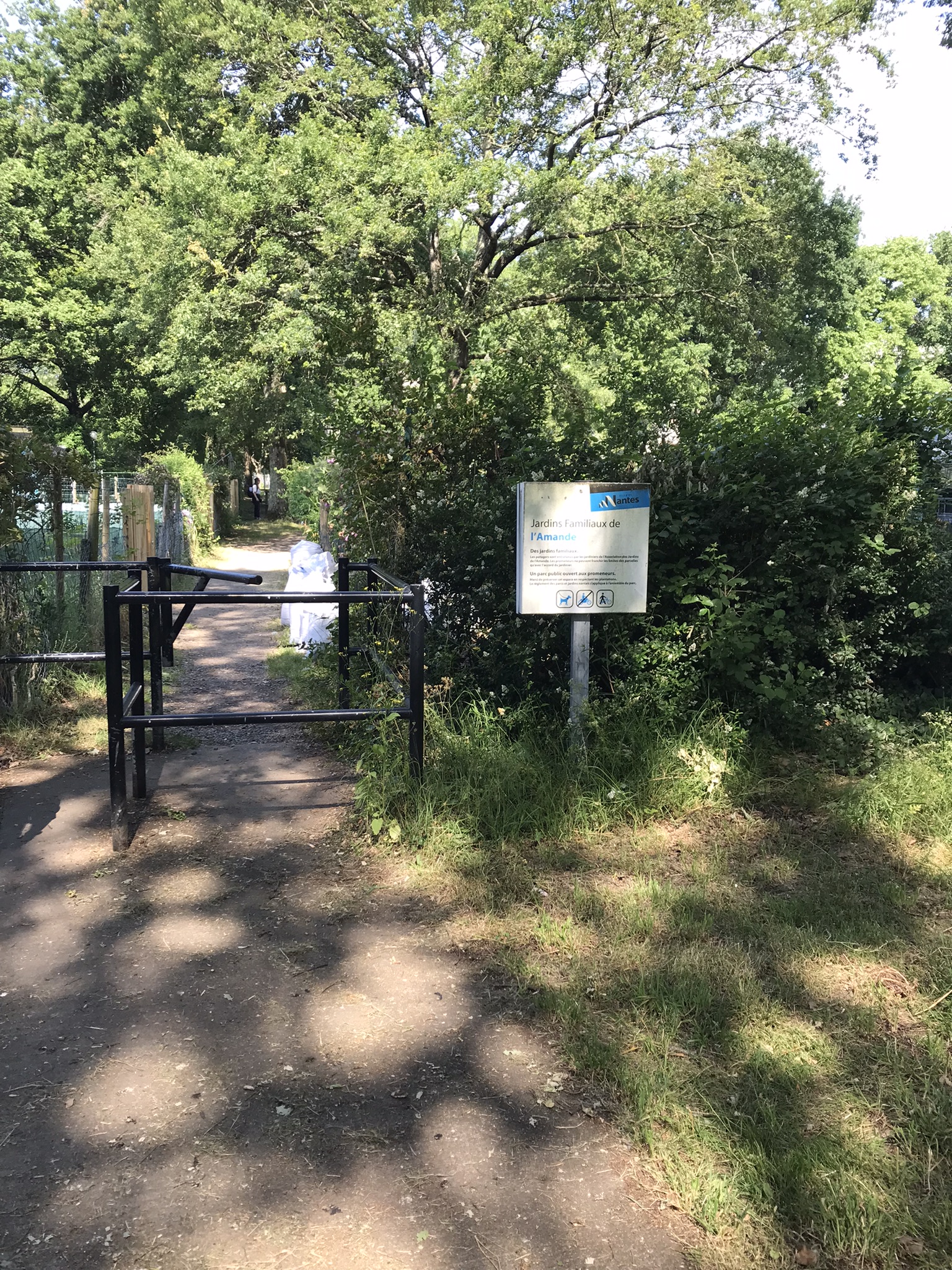The relation between proximity to and characteristics of green spaces to physical activity and health: A multi-dimensional sensitivity analysis in four European cities
URBiNAT Scientific Partners Marcel Cardinali and Uta Pottgiesser from the Institute for Design Strategies at the OWL University of Applied Sciences and Arts (Germany), are the co-authors of a recent publication on the relation between proximity to and characteristics of green spaces to physical activity and health. The results of this multi-dimensional sensitivity analysis in four European cities, providing insights into how green space characteristics can influence health at different scales, are published in the Journal Environmental Research (Elsevier, ScienceDirect, 2024).
Highlights
- Effect size, significance and direction of effects were sensitive to the proximity.
- Green space health effects operated at different proximities and may mask each other.
- Physical activity mediated health effects for distinct green space characteristics.
- Indirect effects were stronger with semi-public and private green spaces included.
- Direct health effects for intermediate surrounding vegetation and green corridors.
Abstract
Non-communicable diseases are the global disease burden of our time, with physical inactivity identified as one major risk factor. Green spaces are associated with increased physical activity of nearby residents. But there are still gaps in understanding which proximity and what characteristics of green spaces can trigger physical activity. This study aims to unveil these differences with a rigorous sensitivity analysis.
Green space accessibility and green space uses indicators showed a pattern of significant positive associations to physical activity and indirect to health at distances of 1100 m or less, with a peak at 600 m for most indicators. Greenness in close proximity (100 m) had significant positive effects on physical activity and indirect effects on health. Surrounding greenness showed positive direct effects on health at 500–1100 m and so do green corridors in 800 m network distance. In contrast, a high quantity of green space uses, and surrounding greenness measured in a larger radius (1100–1500 m) showed a negative relationship with physical activity and indirect health effects.
The results provide insight into how green space characteristics can influence health at different scales, with important implications for urban planners on how to integrate accessible green spaces into urban structures and public health decision-makers on the ability of green spaces to combat physical inactivity.

Authors & Co-Authors
Other URBiNAT Research Outputs
URBiNAT has a substantial and growing archive of academic papers, books, conference proceeding, policy white papers and other outputs in connection with the project.







